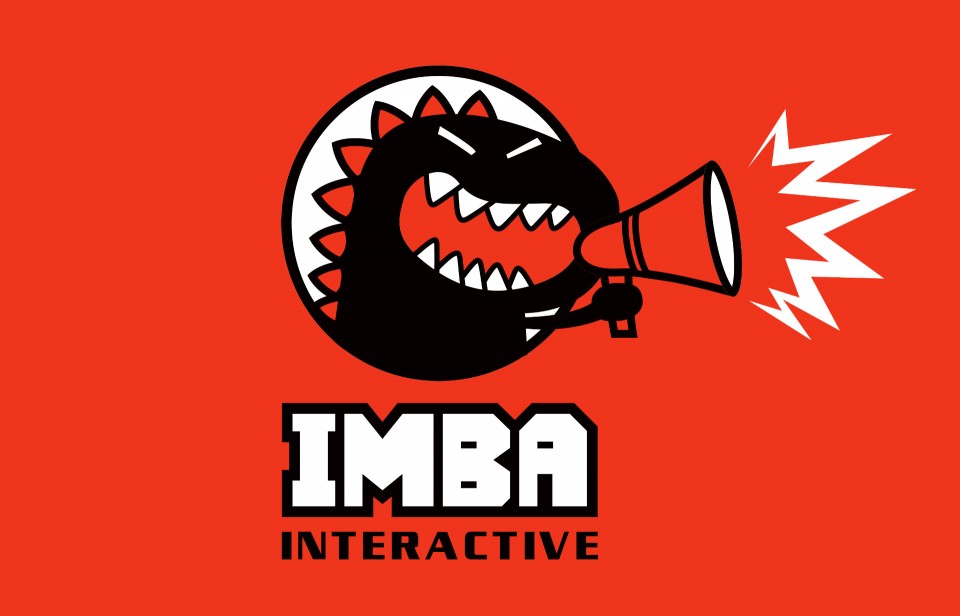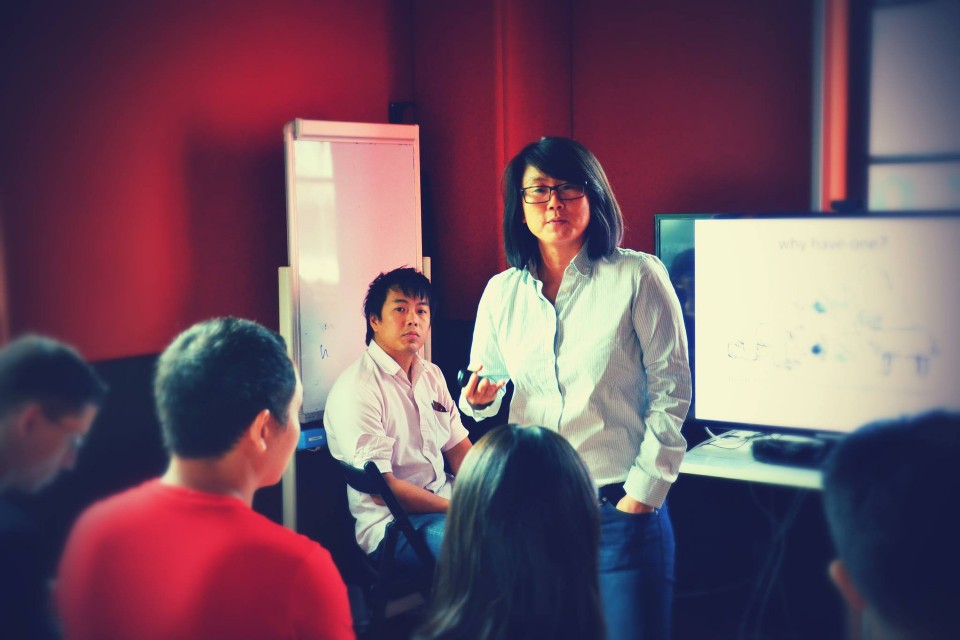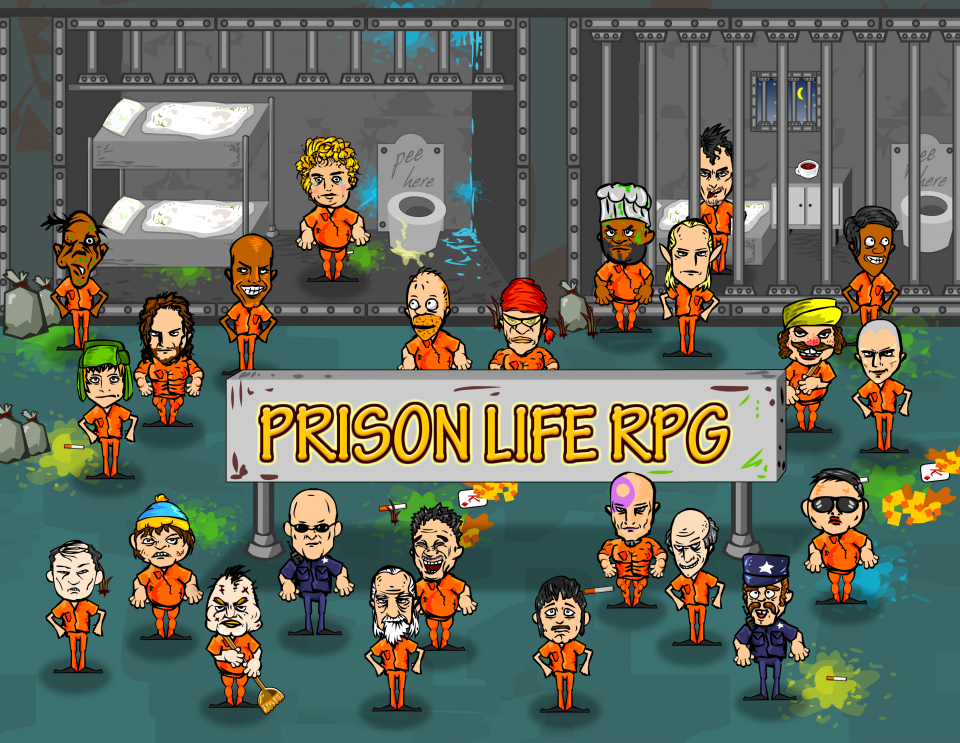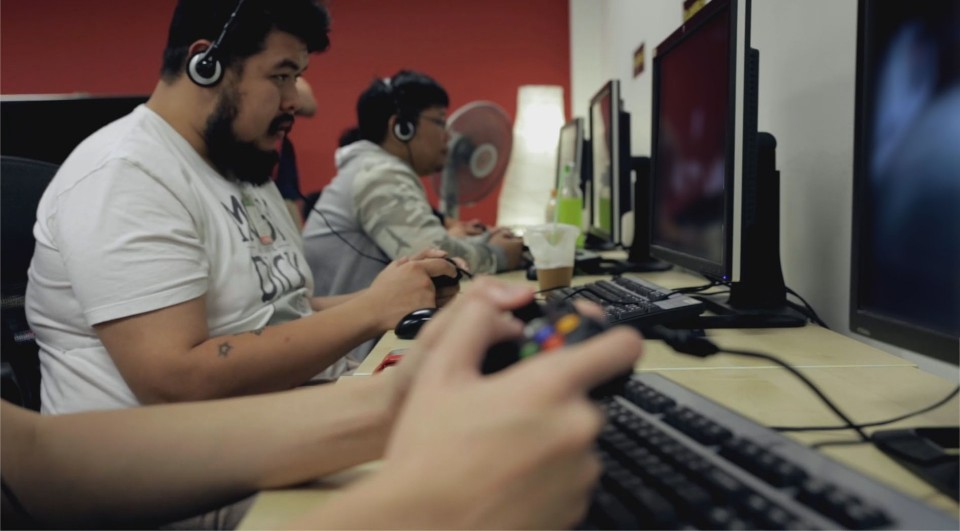Jeremy Goh, co-founder of IMBA Interactive, explained how better audio can lead to better casual games in his recent Casual Connect Asia speech. To find out more about delivering the audio quality audiences increasingly expect, watch the video below.
main
Asia 2015Video Coverage
Chin Hooi Yen: Fueled by Challenge | Casual Connect Video
Polaris Law Corp. Director Chin Hooi Yen dove into the complexities of venture capital and funding a startup during her lecture at Casual Connect Asia 2015. Learn more about cap tables (which list a company’s shareholders, their percentage of ownership and what types of shares they own), securities laws and other fundraising complexities and walk through some numbers based on a “typical” startup in the video below.
ContributionsDevelopmentGame DevelopmentIndieOnlinePostmortem
Prison Life RPG: How “Let’s Plays” Saved an Indie From a Regular Job
Nob Studio is an indie company from Singapore, run by Shu Wan Cheng. He has been working as an indie game dev full time since 2008. Initially Shu Wan was developing Flash games only, and gradually switched to mobile. He barely survived as a solo dev for many years, and calls Prison Life RPG his biggest success so far.
Asia 2015Video Coverage
Kenneth Tan: A Clear Vision | Casual Connect Video
In his Casual Connect Asia lecture, DeNA Lead Producer Kenneth Tan described the company’s collaboration with Blowfish Studios, Legends of Mora (working title). Kenneth outlined the benefit of bringing DeNA’s operational, analytical and market expertise to partner studios like Blowfish. “Creating a game is no walk in the park,” he says. “Creating a game and making it stand out in a sea of 500 launches per day on iOS alone, now that’s difficult. Creating a game and making sure it’s financially successful on top of all that — that’s an almost insurmountable task.”
Asia 2015Video Coverage
Benjamin Pommeraud: Analytics in a Creative Setting | Casual Connect Video
Ubisoft Head of Player Intelligence Benjamin Pommeraud reported on the company’s efforts to make the games players are looking for during his speech at Casual Connect Asia 2015 “Every year we collect data — we collect billions of data points to understand how our customers behave inside our games,” he says. For his advice on how more developers can use player feedback and internal expertise, watch his speech below.
ContributionsDevelopmentGame DevelopmentIndieOnlinePostmortem
Soccer Puzzle League: A Casual Game Too Hard Turns Into a Niche Product
Match3Studio is a Singapore-based game studio founded in 2012 by Budhi Tantra. As the company’s name might have revealed, it was created with the ambition to develop mainly match-3 games. However, they eventually decided to diversify. Their debut game Soccer Puzzle League was meant for a mass casual audience, but due to the complexity of gameplay became successful as a niche title, Budhi recalls.
The Team with Versatile Skills

Like most start-up game developing companies with no financial backing, budget has always been the utmost concern. Therefore, we wanted our team to be as small as possible, with each individual being as versatile as they can. So now I, aside from being the founder, deal with conceptualizing, level balancing, quality control, and work extra shifts to cover development costs. Kamonwit Sirithananonsakul, the developer and designer, is responsible for all technical and design aspects, and Markel Madrigal, the animator, does character modeling, animation, and motion graphics promo. We’re a team of just three people.

Puzzle Quest+Dungeon Raid+Soccer = Dream Game
The idea of Soccer Puzzle League came around because of the lack of good match-3 battle RPG games following the great success of Puzzle Quest by D3Publisher. We were suffering from a withdrawal syndrome so much that we started to dream about playing a match-3 battle RPG game in our minds, with our own favorite themes. Shortly after, there came Dungeon Raid, which managed to temporarily quench our thirst for an enjoyable match-3 game. After playing Dungeon Raid, a light bulb turned on, and we came up with the idea of mixing the two gameplays together with soccer as the main theme (it was a no brainer to pick soccer at that time: it’s the world’s most popular sport and FIFA World Cup 2012 was looming).

From Beta to a Full-Fledged Game: Twice as Long as Planned
We knew we had a limited budget and very little time (due to the looming FIFA World Cup 2012) from the beginning, so as soon as we came up with the game concept, we had the “keep it simple” mentality. We did manage to keep the main game concept and graphics simple. However, we realized that a solid gameplay is necessary to make the game competitive, and this contributed to the complexity of the project.
We fit the development of the alpha version in thee months out of the total six allocated for development. Going to beta stage took us another month or so. It seemed to be smooth sailing up, and morale was high in the team. But like in most situations, just when you think everything is going to be alright, moving from beta to a released and polished game took us beyond the allocated six months and frustratingly, we missed the World Cup!

Now, we realized that the main challenge is to get the game, well, playable. Wait, no - not only playable, but addictively playable and balanced, not too difficult and not too easy. It took us another 6 months to make all formula and level balancing match our standard (which turned out not so balanced after all). The game supposed to be released in July/August 2012 became a 2012 end-of-the-year release.
Too Hard for the Mass Market
Did we say that we have a low budget? Well, let us recap that again. We had a very low production budget. All the money used for development came from personal savings coupled with some odd jobs income. Development took twice as long as expected, so its cost ate up most, if not all, of our marketing budget.

With only social media and posting at forums, we managed to quietly release the game for iPhone and iPad. Soccer Puzzle League has fans all over the world. Critics, generally, loved it. However, one thing that was complained about the most was the fact that the game is too difficult (remember, we mentioned that it was balanced up to our own standards?). A product meant for casual gamers became a niche game. We quickly released an update to enable players choose difficulty setting, but it was too little, too late. Coupled with the lack of publicity, the game lost its traction and got lost among countless other apps.
Everything Happens for a Reason
It was sad to see our brain child drown in the depth of the sea of apps. However, not all has been lost. Soccer Puzzle League caught the eyes of an investor. Match3Studio was partially bought and became a subsidiary of the main company, PixnPlay Pte Ltd, whose focus is mainly on business apps. It’s a drastic shift, from developing games to business apps. Nevertheless, Match3Studio still operates developing and publishing more games. So fa,r we’ve made Zombie Defense: Smash&Crash and Great Dice D&D, and are currently working on another match-3 game we are hoping to publish by the end of the year.

In terms of Soccer Puzzle League, Match3Studio is now planning to make it available on Android devices. Beyond that, if there’s enough funding, the developers admit, they’d love to have the honor of developing Soccer Puzzle League 2, which would revise, improve and solidify the gameplay using the hard-earned and humbling lessons from the past to avoid pitfalls.
ContributionsDevelopmentGame DevelopmentIndieOnlinePostmortem
Blue Eden: Raising Wildlife Protection Awareness by Showing Beauty Instead of Problems
By 2005, Chun Wah Kong had been in the games industry for over a decade. He was ill, burnt out, and felt like he had fallen out of love with video games. The moneymen thought it was too risky to invest in new ideas, so Chun just watched more and more rushed sequels and clones… Games were suffering from creative bankruptcy. Chun said no and walked away.
Facebook kept him in the gaming loop. His friends kept asking, “Don’t you miss making games?” “On a holiday in Dominican Republic, my wife Patsy and I were on a leisurely stroll watching lots of sea life in the shallower waters of the beach. When we returned to our room, I noticed a message on the towels on the bathroom wall. It read “Save Our Planet”. Chun Wah Kong recalls sharing the story of his falling in love with video games again creating Blue Eden.
A Fish Game to Make with Friends
I scribbled a lot of ideas into my notepad for a “fish game” during this holiday, and, like many ideas in the same notepad, not much was ever going to come to life, I believed. Until Hami, an Apple evangelist friend, showed me some games on his iPhone and said anyone could write and publish games on this platform.
I started speaking out my idea in front of some close friends to see if they wanted to make the game together in our spare time. We all have jobs, so it would be evenings and weekends only. “It’s gonna be fun,” I said, “Like the old times!” I promoted my idea through the wildlife documentary aspect of the future game, the swarming behaviours, and the camaraderie of friends who would just be having fun working on a project together. All in all, we are all fans of wildlife documentaries.
Plasticine, Plush Toys and Splashing Around in the Sink - How to Communicate with Remote Teammates
The initial challenge was communication. We all live far away from each other, some in other parts of the world, and we were never serious enough to have “video conferencing at 8 PM every Sunday night GMT”. It was difficult at times to relay ideas when there was little reference material and all far away. I simply had to use every smallest thing at my disposal and do whatever it took to help the other person understand. This included building plasticine models, compiling badly drawn animations, shooting video enactments with plush toys, and splashing around in the sink to capture amateur foley. Game designers sometimes use Lego to visualize, so in my mind, this is no different.
Showing the Beauty of Nature Instead of Avoiding Floating Plastic and Illegal Drift Nets
I decided I wasn’t going to have environmental issues as a part of the level design. I didn’t want it to be a game where you have to avoid floating plastic and illegal drift nets; I wanted to show the bright side of our ocean and say, “Isn’t nature great? Isn’t it worth saving from destruction?” I wanted to convey the same excitement I felt the first time I saw a school of mackerel mass together into a bait ball in a wildlife documentary on TV. This quickly became the Predator level.
The basic design of the Feeding level followed, but the eventual rules to this game went through many iterations before we settled on the match-3 styled game we have now. For a long time, it was going to be a maths game, but the rules were not easy to convey, and perhaps it was too challenging for younger children. That’s why we changed it to a much simplified matching experience. I think we made the right decision, and I know that I tend to make games too challenging for most people.
When I first saw a video of how surgeonfish mate, I imagined a game similar to Missile Command. I emailed Ben, the artist for this level, telling how I wanted the sperm and the eggs drawn in order to provide an interesting interpretation. I wanted the game to loop and go on endlessly, like Tetris. So the first level should be the result of the Breeding level. A simple find & rescue game type was proposed in a coral reef environment. In my mind, the game had to amaze from the word ‘Go’, I felt this was only achievable if the player had direct control over the fish school and interaction with the coral.
As the project was taking shape, we’ve had to say goodbye to some friends/team members because their circumstances had changed and they were no longer able to spend time on the game. Even between friends, sometimes it was not easy to tell each other to hurry up, since we were considered doing a favor for each other. Or when people were giving up their spare time for little or no monetary returns. After all, I was funding the production out of my own savings and could only afford mates’ rates. In the past, I have heard stories of friends breaking up over situations like this, but I’m glad to say that everything’s cool, and I’d be more than happy to work with any of these guys again in the future. We were in a transitional phase of development when our lead programmer Jim joined the project to implement the front end and make the gameplay. And then everything changed.
Team Expansion: New People, New Problems
I sat opposite Jim for five years at Sony when we worked on a little known game called The Getaway, and got along really well. He is the type of guy who has the drive and desire to move a project forwards, taking the game from being a little more than a tech demo or a proof of concept to a finished product. Jim was like me but with the ability to turn ideas into code which I can tinker with, offering me the tools to tweak and refine.
No family member who I thought could help got away with not being asked. This includes the two youngest on the project who were born during the development of Blue Eden, Jim’s son Musashi and my niece Vanessa. Even though they live 5000+ miles apart, their voices can be heard together as the Skoobie Games start-up jingle.
In an attempt to expand the project, I no longer sought help from immediate friends, but reached out to friends of friends and recommendations, giving opportunities to people who may have never made a game before.
The results of this were mixed. At one end of the scale, people like Minkee, Alex and Ricky did extraordinary work on the illustrations, voice-overs and 3D animations respectively; these are people who I have never met before or spoken to prior to Blue Eden. At the other end, we had people who promised to help but never followed through. It would have made a significant difference if the time and effort spent chasing those individuals were spent on the project. This has nothing to do with money, since I was more than happy at this stage to pay the rates they were asking for. Trying to set myself apart from other principals, being a dab hand at making gyozas, I offered all my potential contractors my restaurant grade gyozas as an alternative/ supplement payment. Sadly, no one took the offer which still stands today.
My friends know that I am a foodie, and I’ve been conscious about my food habits long before the start of the project - I didn’t want to be a hypocrite. If you care enough about nature, it’s not difficult to follow a responsible path. We need to make wise decisions about the seafood that we consume, by giving overfished species a break and the chance to recover. There’s plenty of alternatives available, we don’t need to stick to certain food even though we’ve always had a particular kind of fish for different occasions.
There is one thing which I hope we have achieved with Blue Eden: it’s that the game has planted a seed of awareness in people’s minds. If this happened, the many evenings that we spent in front of our computers when we could have spent it with our family and loved ones creating this game would certainly be worthwhile.
They’ve also launched a free version of Blue Eden called Blue Eden Lite on the App Store to allow more people to experience the game and bring interest to the wider topic of conservation and sustainability.
ContributionsDevelopmentGame DevelopmentIndieOnlinePostmortem
Secret Santa: It’s a Stealthy Xmas - A Rediscoverable Seasonal Game
Secret Santa: It’s a Stealthy Xmas is an HTML5 stealth-based platform game with a Christmas flavor targeting a young audience. In the game, players take the role of Santa and deliver presents under several Christmas trees while remaining hidden from the various family members inhabiting the different homes/levels. The developer, Adsumsoft, is a tiny mini-micro-studio based in Singapore. It actually consists of just one person, game designer and author Roberto Dillon, but the team can easily expand on a per-project basis whenever needed, or even find creative and original uses for existing PD and CC-licensed assets to complete development. Roberto shares the experience of creating a seasonal game that has an advantage: it can be rediscovered and updated every holiday season.

No Enemies, Drama or Failing
The idea behind Secret Santa was to create a joyful experience, without real enemies and drama for failing. In other words, it was designed to put players in a good mood suitable for the festive season.
A set of Christmas carols was needed to achieve the right atmosphere, and a few well-known ones were easily available from A-M Classical to accompany players in all phases of the game, including the “Game Over” screen which, as mentioned, still had to be perceived as a celebrative moment and not as an angry, disappointing failure.
Graphics wise, the idea was to keep things simple and cute, thanks to self-contained levels in each screen and a retro art style reminiscent of old classics like Little Computer People which, incidentally, is one of my all-time favorite games. The art assets used in the game were done mostly by Lanea Zimmerman and Trent Gamblin and fit the setting pretty well, delivering the kind of style that was originally intended.
The reasons behind this choice varies. For example, being an “old” guy who grew up with 8-bit games, I obviously have a soft spot for retro-inspired graphics. Anyway, even from a less sentimental and more practical perspective, this type of graphics also makes sense, since it’s easier and cheaper to make than other styles and allows faster iterations if something needs to be tuned or polished further later in development.
All About Jumping and Hiding
Secret Santa is a platformer with a simple stealth gameplay at its core, where players have to exercise patience and then be quick in their movements.
For the game to work, it was essential to make funny and interesting ways for the player to hide. So almost every piece of furniture in the houses has been designed as a platform to jump on and get to locations that remain out of sight to the family members: even a bookshelf or lamp, apparently too high to be reached, can indeed be a great hiding spot to wait while a little kid or an auntie passes underneath checking whether Santa has already delivered presents for them.
Besides jumping around, hiding behind doors is the other core mechanic. Glass doors can be opened to let Santa hide for a while as well, visible to no one but the player!
Controls: Buttons’ Functions Change with Santa’s Position
Controls can make or break a game on any platform, and even more so in mobile gaming. Great care was put into them to make sure that Santa’s acrobatics were as intuitive and easy to handle as possible, both when playing on PC and on a mobile touchscreen.
In touch versions, directional arrows for running were placed at the sides of the screen (left arrow on the left side, right on the right) with a button above each of them. The functionality of the buttons varies automatically according to Santa’s position and, in all but one specific case (i.e. while on the stairs), pressing either one will result in the same action, allowing players to use either thumb.

By default, the buttons are light blue and pressing them would result in jumping but, whenever Santa is next to specific objects, like Christmas trees or doors, the buttons turn red to signify something different can be done. That’s how Santa can go in and out of chimneys, hide behind doors and step away from there, use the staircases and, last but not least, deliver the presents under the Christmas trees.
Predicted Problem of Discoverability
The game was developed using Construct 2 and while the production workflow went very smoothly, it was kinda troublesome to fully exploit HTML5’s flexibility to deliver the game on multiple platforms and operating systems, since performance still varies significantly across browsers and devices. Eventually, we decided to focus only on PC desktop browsers, iOS (with the game ported by using Ludei’s CocoonJS) and also give a shot at the new upcoming Tizen platform, while temporarily leaving others behind due to lack of time for organizing proper testing.
Tizen caught our attention because releasing HTML5-based games on this platform is quite straightforward. Besides, we developed the game while the Tizen million-dollar App Challenge was on, so we decided to give it a try. Naturally, we didn’t win anything, but are still curious to see how the game will perform next Christmas on these new devices.
Being a very small studio and completely lacking marketing muscles and distribution power, it was easy to predict discoverability would be an issue, and indeed it was. Secret Santa was released as freeware in the second half of November 2013. The web version running on Clay.io and Facebook was the first to be launched, with iOS following soon afterwards.
Monetization was planned through ads on the web and voluntary donations through PayPal on iOS (no ads there to provide a pure, undisturbed playing experience) with 50 percent of any eventual donation to be devolved to charities supporting children in South East Asia.
Overall, by the end of 2013, the game had about 55k users, mostly playing on the web, while on iOS, Secret Santa managed to break into the Top 100 Arcade and Family games in only two countries (Macau and Laos). Sadly though, nobody donated anything (yes: you read right, not even a single person!).
Most likely, the reason for the complete lack of donations was that the game is targeted at children who, for obvious reasons, can’t donate directly but need to ask their parents first. Probably, the latter were not keen to do so.
Ads revenue didn’t fare any better and resulted in only a few dollars that were then donated to Seametrey Children’s School and Village in Cambodia.
Seasonal Games: The Chance of Being Rediscovered Every Year
Secret Santa is a seasonal game, which means interest will peak only at a specific times of the year. This means there’s not much purpose in doing an update right now, since nobody would notice. On the bright side, seasonal games will periodically be rediscovered and get new chances for reviews on blogs, websites, and YouTube channels. In the end, when done right, they may actually have a longer tail than other games whose novelty factor and interest burns out quickly.
Taking this into account, a proper Android version may be released in time for Christmas 2014: maybe we will get a donation this time!
Secret Santa is available on browsers, iOS, and Tizen platforms. Roberto is currently working on a couple of new concepts: an “on-rails” RPG game named The Innkeeper’s Tales and Defense: Evolution, a sort of tower defense/RTS hybrid based on cellular automata theory. To remain up-to-date with his work, check out Adsumsoft’s Facebook page or Roberto’s Twitter.
Video Coverage
Jeffrey Paine on Understanding Your Strengths | Casual Connect Video
Jeffrey Paine, founding partner of Golden Gate Ventures, an early stage technology incubator based in Singapore, tells us that the more they travel in a region, the more they understand why entrepreneurs do what they do. There are plenty of local problems to solve, and often a start-up company doesn’t want to solve huge global problems, but rather their smaller local problems that their communities are passionate about.
Jeffrey works to help with these local issues with certain network practices that Singapore and Silicon Valley bring that can help start-ups get to market faster and become more efficient. Then it’s about putting that network together.
Challenges in Entrepreneurship
In the past three years, Jeffrey has trained approximately thirty entrepreneurs each year. Watching these companies grow, mature and raise money gives him great satisfaction. Working with someone who has an idea and wants to build a company, and then seeing it succeed is what he enjoys most. Of course, entrepreneurs have their own set of challenges. “They have to be good at everything, but that is impossible,” Jeffrey says. “No one can be good at everything, especially when you don’t have money or the people you need.” Jeffrey can show them what other companies are doing and introduce them to the networks in their own country. This is more likely to be of use than advice from a foreigner.
The most important advice Jeffrey has for an entrepreneur starting out is, “Know what you are good at. Analyze your strengths. As a start-up, you are at a disadvantage. In a competitive space there will be people who are better or faster or work harder than you. You need every advantage you can get to excel and stand out. The only way to do that is to really understand what you are good at, and not many people know what they are good or not good at.
Once you understand that, you can then determine what kind of company you want, what products you should build, which customers you should sell to, what industry you are passionate about, and what problems you must solve.” A lot of entrepreneurs start a company, finding it easy and cheap to start. But Jeffrey insists they should slow down and understand themselves first.
His second advice is to work hard on your idea initially. “Jumping into the start-up and doing customer development is a waste of time if your idea is not good in the first place. So you should spend more time on idea generation and improving ideas before you do anything else.”
Choosing Good People
For Jeffrey, the greatest challenge was learning to read people, which is essential to choosing a good person to hire, partner with, or co-found a company with. “You can do some things by yourself, but not everything by yourself,” he says. If you choose the wrong partner, there are going to be lots of problems.”
With time, he has become more sensitive to recognizing whether a person will be the right fit. He goes 80 percent on gut feeling and 20 percent on reference checks. And he points out, “There are so many people in the world; why entertain, even for a moment, someone who just doesn’t fit? I’d rather do it on my own than with someone who is only 80 percent right.”
He believes the ecosystem has helped him in his career as well. He meets with a lot of people, making a large network with a lot of data collection. As a result, he has a sort of pattern recognition and can easily understand what will or will not work. This is a great help in selecting founders, teams and products.
Jeffrey enjoys the work he does at Golden Gate Ventures, which invests in early stage start-up companies in Southeast Asia. They focus on consumer internet mobile games infrastructure, such as payments and service for small to medium companies. As well as providing capital, they bring in other investors. With their strong ties to Silicon Valley, they can also help with launch in the US, and can facilitate discussions with the big internet companies in the Bay Area. Another important characteristic of Golden Gate is that they help as a firm, so they will all help a company, rather than assigning it to one partner. Generally, they help with product, user experience and marketing. They can also assist with foreign financing, exits and facilitating a sale if these are needed. Recruiting has also become a major component of what they do, as well as introductions to partners, customers and advisors to help you get to market faster.











